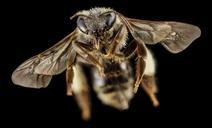Introduction
In our increasingly urbanized world, air quality has become a significant concern. From smog to allergens, maintaining a healthy indoor environment is paramount for well-being. Enter the air purifier—an essential device designed to cleanse the air of pollutants and improve the quality of our living spaces. However, like any electronic appliance, air purifiers can run into issues, often indicated by error codes that can leave users scratching their heads. In this article, we will decode common air purifier error codes, provide helpful insights, and guide you through troubleshooting strategies to avoid common pitfalls.
Air Purifier Error Codes Decoded: Avoiding Common Pitfalls
Understanding your air purifier's error codes is crucial for effective utilization. Often these codes signal when maintenance is needed or if there’s an operational issue requiring immediate attention. For instance, if your air purifier displays a "filter replacement" error code, it's time to change the filters to ensure optimal performance.
What Are Air Purifier Error Codes?
Error codes are numerical or alphanumeric messages displayed on the unit that inform the user about specific operational issues. These can range from filter maintenance reminders to sensor malfunctions. Knowing what each code means helps in swift resolution and prolongs the life of your device.
Common Air Purifier Error Codes
Filter Replacement Code
This code typically appears when the filter has reached its lifespan and needs replacing. Regular maintenance ensures your air purifier continues functioning effectively.
Sensor Malfunction Code
When an internal sensor fails or is obstructed, you might see this code. It’s essential to troubleshoot sensors regularly as they play a significant role in monitoring air quality.
Power Supply Code
If your device isn’t receiving adequate power, it may display this code. Checking connections and ensuring no fuse has blown can resolve this issue quickly.
Overheating Code
Air purifiers can overheat if blocked or if their components are faulty. Always ensure there’s ample space for airflow around the unit.
Humidity Level Alert
Some advanced models come with humidity sensors that trigger alerts when humidity levels are outside optimal ranges. This feature is especially useful for those asking themselves: "Should I close the door when using a humidifier?"
Red Light Indicator Meaning
A flashing red light on your air purifier usually indicates an immediate issue needing attention—often related to filters or sensors.
Why Understanding These Codes Matters
Being proactive instead of reactive saves time and money in repairs or replacements. By familiarizing yourself with common error codes and their implications, you’ll be better prepared to maintain optimal indoor air quality without unnecessary interruptions.
How to Troubleshoot Air Purifier Errors
Troubleshooting doesn’t need to be daunting; understanding some basic steps can save you from calling professionals unnecessarily.
Step 1: Refer to the Manual
Your first step should always be referencing your user manual. Each model may have unique codes and troubleshooting steps tailored specifically for its design.
Step 2: Check Filter Status
Filters are often at the heart of many issues:
- Ensure they are clean and not obstructed by dust or debris. Know how often they need changing based on usage; typically every six months or as indicated by an error code.
Step 3: Inspect Sensors
If you're facing sensor-related errors:
- Clean any dust buildup on external sensors. Make sure nothing is blocking airflow around them.
Step 4: Power Supply Check
Ensure that:
- The power cord is firmly plugged in. The outlet works properly with other devices. There’s no visible damage to cords and plugs.
Step 5: Resetting Your Unit
Sometimes all it takes is a reset:
- Unplug your device for a few minutes before plugging it back in. Follow specific reset instructions provided in your manual if available.
Helpful Insights on Maintaining Your Air Purifier
Preventive care can extend both functionality and lifespan significantly:
Regular Cleaning Routines
Establish a routine cleaning schedule for both filters and exterior surfaces:
- Dust off outer surfaces weekly. Replace filters according to usage metrics—more frequently in high-pollution areas.
Optimal Placement Strategies
Where you place your air purifier matters:

Use of Additional Devices
Sometimes integrating other devices can enhance performance:
- Consider using humidifiers alongside purifiers during dry seasons but ask yourself, “Should I close the door when using a humidifier?” Portable dehumidifiers can help maintain ideal moisture levels conducive for allergies while preventing mold growth in damp areas like attics or crawl spaces.
Types of Dehumidifiers: Enhancing Indoor Comfort
While discussing air purification, let's touch upon dehumidification—a critical component in maintaining healthy indoor environments too!
Mechanical vs Desiccant Dehumidifiers
Mechanical Dehumidifiers
These utilize refrigerants and compressors—ideal for larger spaces but often noisier due to moving parts.
Desiccant Dehumidifiers
These rely on moisture-attracting substances (like silica gel) making them quieter but less energy-efficient for large areas; however, they're perfect for small enclosed spaces such as closets or shoe cabinets—how to use silica gel in shoes effectively?
Understanding Humidity Levels: Control Tips
https://powerhousecc.org/contact-us/Maintaining proper humidity levels reduces allergens while enhancing comfort:
Ideal Range: Aim for 30%-50% relative humidity indoors—anything above might lead to mold growth; anything below could result in respiratory issues.
Using Hygrometers - Digital vs analog hygrometers serve as excellent tools for monitoring humidity levels accurately.
Raising Humidity Without Humidifiers - If you're wondering how to raise humidity in grow tents without using humidifiers, consider placing water trays near heat sources—the evaporation will naturally increase moisture levels.

Controlling Humidity Using Dehumidifiers - For those asking should I close the door when using a dehumidifier? It's advisable! Closing doors minimizes outside influence and enhances efficiency by reducing excess workload on units.
Air Quality Monitor Mold: Know Your Enemy!
Mold spores thrive in damp environments; hence monitoring becomes crucial:
1) Invest in good air quality monitors that can detect mold presence effectively!
2) Regularly inspect basements/crawl spaces where moisture accumulation commonly occurs.
3) Implement preventive measures like installing attic dehumidifiers especially during summer months when humidity spikes!
FAQs About Air Purifiers
Q1: What does the red light mean on my air purifier?
The red light usually indicates that there's an issue requiring attention—most commonly related either filter needs replacement or sensor malfunctioning.
Q2: Should I close the door when using a dehumidifier?
Yes! Keeping doors closed while running a dehumidifier helps maintain optimal performance levels as outside moisture won’t affect its efficacy drastically!
Q3: How do I fill my humidifier correctly?
To fill your humidifier safely: 1) Unplug it beforehand! 2) Remove water tank carefully avoiding spills onto electrical components! 3) Fill tank with clean water before reattaching securely back onto base before plugging back again!
Q4: Can I use an infrared heater inside my home?
Absolutely! Infrared heaters provide direct warmth making them suitable options especially during colder months compared against ceramic heaters which disperse heat via convection methods leading slower warming times overall!
Q5: What type of dehumidifier should I get?
The choice depends largely upon space size/conditions: For large rooms opt mechanical types whereas desiccant units work best smaller confined spaces!
Q6: How do I clean my humidifier properly?
Cleaning involves disassembling unit removing any built-up minerals then rinsing thoroughly with vinegar solution followed by plain water rinse ensuring all residues eliminated before reusing again!
Conclusion
Understanding your air purifier's error codes is just one piece of maintaining excellent indoor air quality—but it’s certainly among the most crucial elements! Through regular maintenance practices such as checking filter statuses/sensors along with managing relative humidity levels effectively will contribute immensely towards healthier living conditions overall!
By decoding these error codes correctly plus employing suggested tips throughout this article you’re now equipped better than ever before against common pitfalls associated with owning an effective home appliance designed solely dedicated towards improving life quality through cleaner breathable atmosphere indoors!
Embrace proactive measures while navigating potential pitfalls ahead confidently knowing you’ve gained insights necessary avoiding complications surrounding these vital home devices!